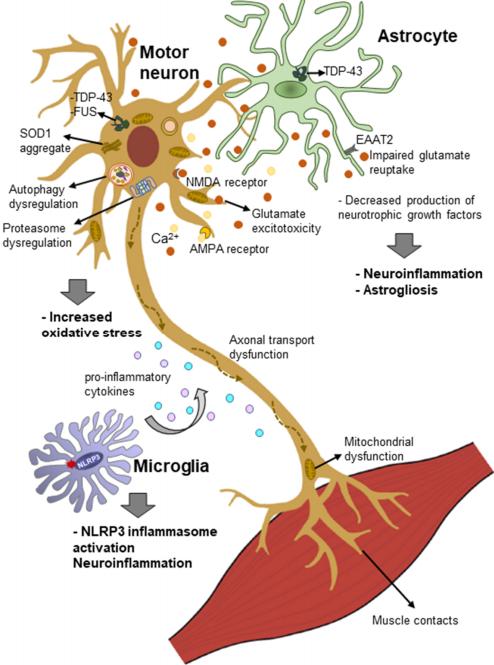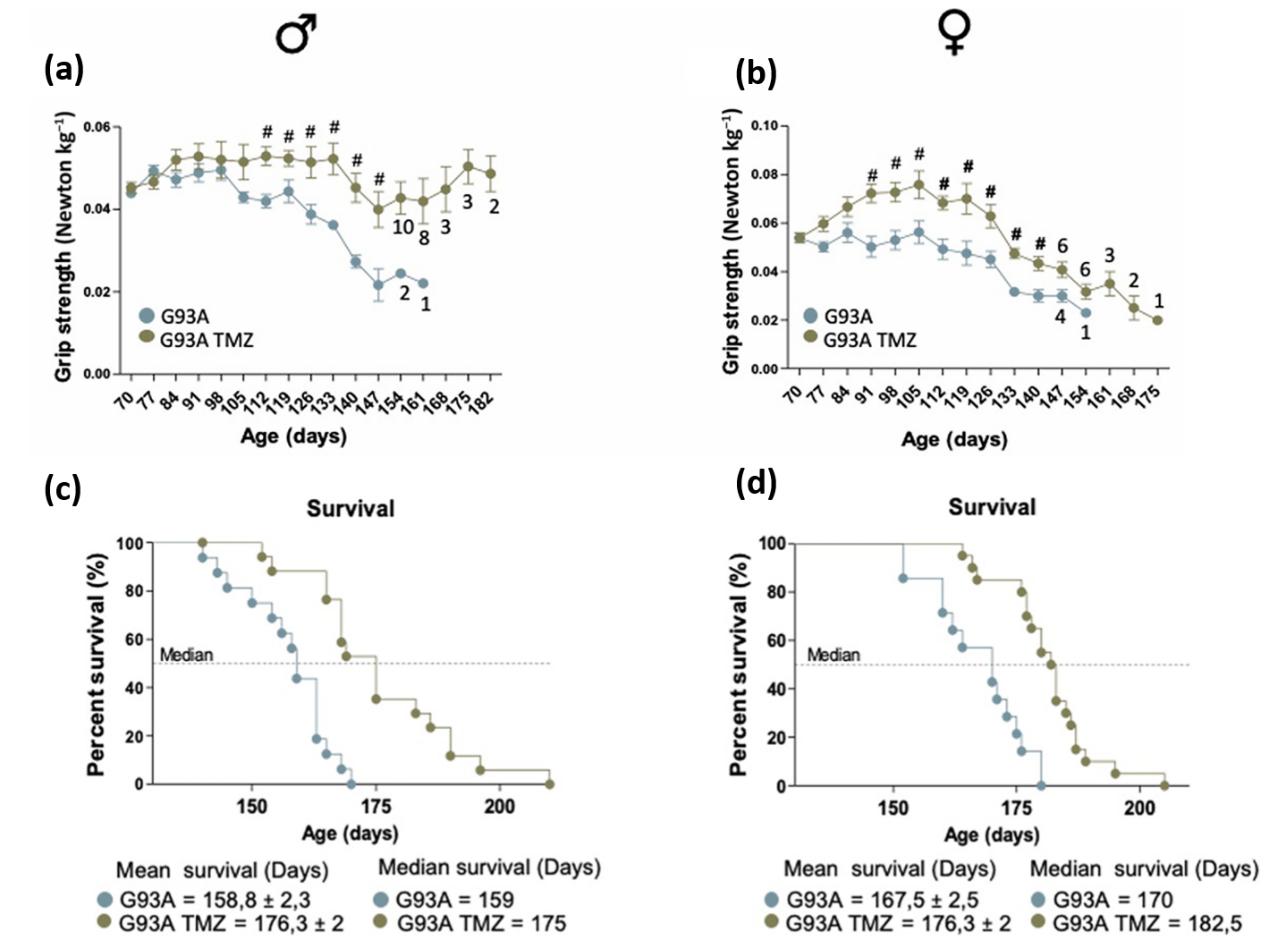Amyotrophic Lateral Sclerosis (ALS) Model
If you are searching for reliable in vivo efficacy studies for the assessment of potential therapeutics for amyotrophic lateral sclerosis (ALS), Creative Bioarray is here to help. Our standard SOD1-G93A transgenic mice are an excellent model to evaluate the efficacy of putative therapeutics for ALS, providing valuable insights for drug development. Our team of experts can assist you in designing and conducting experiments to ensure accurate and meaningful results.
Amyotrophic lateral sclerosis (ALS), also known as motor neuron disease (MND) or Lou Gehrig's disease, is a rare and devastating neurodegenerative disease that affects the motor neurons responsible for controlling voluntary muscles. This progressive disease results in the gradual loss of muscle control, leading to difficulties with movement, speech, swallowing, and eventually breathing. Unfortunately, there are currently few therapeutics available that can halt, delay, or reverse the progression of ALS. As such, there is an urgent need for the development of effective treatments for ALS to improve the quality of life for individuals affected by this devastating disease.
 Fig. 1 Proposed mechanisms of the pathogenesis of amyotrophic lateral sclerosis (ALS)
Fig. 1 Proposed mechanisms of the pathogenesis of amyotrophic lateral sclerosis (ALS)
Our Amyotrophic Lateral Sclerosis (ALS) Model
- Available Animal
SOD1-G93A transgenic mouse: The transgenic mouse model SOD1-G93A, which expresses a G93A mutant form of human SOD1, reproduces numerous characteristics of ALS, including axonal and mitochondrial dysfunction, progressive neuromuscular dysfunction, gliosis, motor neuron loss, and ultimately death. Consequently, these mice have been extensively and effectively utilized to screen for potential novel treatments for human ALS. - Group Setting
- Control group
- Model group
- Three dose groups of test compounds
- Endpoints
- Body weight
- Behavioral tests: Grip test, Rotarod test, etc.
- Histology analysis: H&E staining, Masson staining
- Other customized endpoints: available upon request
……
Example Data
 Fig. 2 Trimetazidine (TMZ) improves muscle strength and extends lifespan of SOD1G93A mice. (a and b) Maximal grip strength of SOD1G93A mice (males in (a) and females in (b)) treated with (G93A TMZ) or without (G93A) TMZ (20 mg kg1 in drinking water) from the onset of the disease (70 days of age) through to disease end point (when mice were no longer able to perform the test).
Fig. 2 Trimetazidine (TMZ) improves muscle strength and extends lifespan of SOD1G93A mice. (a and b) Maximal grip strength of SOD1G93A mice (males in (a) and females in (b)) treated with (G93A TMZ) or without (G93A) TMZ (20 mg kg1 in drinking water) from the onset of the disease (70 days of age) through to disease end point (when mice were no longer able to perform the test).
Quotation and Ordering
Creative Bioarray stands as a leading preclinical CRO provider of in vivo pharmacology services, offering expertise in planning, analyzing, and interpreting preclinical efficacy studies. Leveraging our extensive experience and expertise in neurological diseases, we ensure the delivery of reliable, timely, and high-quality results. We can tailor study protocols to optimize resource utilization and maximize the extraction of valuable information. If you are interested in our services, please feel free to contact us or submit an inquiry to us directly.
References
- Péladeau, C., Sandhu, J.K. Aberrant NLRP3 Inflammasome Activation Ignites the Fire of Inflammation in Neuromuscular Diseases. International Journal of Molecular Sciences, 2021, 22(11): 6068.
- Scaricamazza, S., et al. Repurposing of Trimetazidine for amyotrophic lateral sclerosis: A study in SOD1G93A mice. British Journal of Pharmacology, 2022, 179(8): 1732-1752.